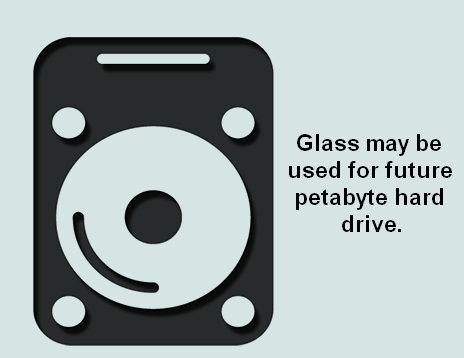You can find more and more terabyte hard drives on the market as the technology of data recording is developing. The mainstream hard drive manufacturers have added terabyte hard drive into their product line. And we can assure that the even larger petabyte hard drive will appear on the market not long since now.
MiniTool software helps you recover data, backup system, and solve disk problems.
In the digital era of exploding quantities of data, people’s demands for large capacity are increasing. Terabyte hard drive started to appear on the market and becomes mainstream storage products. Famous hard drive manufacturers like Western Digital and Seagate have added terabyte hard drives into their product family.
What comes after terabyte? What is bigger than a terabyte? With the continuous growth of enterprise demand for large capacity, the petabyte hard drive will also show up on the market in the future.
How Many Terabytes in a Petabyte
In fact, petabyte is the next unit of data measurement to come. A petabyte contains 1015 bytes of digital information. The unit symbol of petabyte is PB.
- 1 PB is equal to 10245 bytes using a binary prefix.
- That is to say, there are 1024 terabytes in a petabyte.
The enterprises are waiting for petabytes and even the exabyte stage since more capacity is needed in their storage systems; the terabyte will be left behind, eventually (after a long time).
Glass May Be Used for Future Petabyte Hard Drive
The magnetic recording is the main technology for hard drive storage for now and a long time. However, people are seeking for new materials for data storage in the future. According to the experts and storage manufacturers worldwide, glass is potentially to be a vital component in the hard drive to break the recording densities limit so as to meet people’s demands for data storage.
Higher Hard Disk Drive Density: HAMR, MAMR, MRAM And More.

According to IDC’s prediction, the world will produce 175 zettabytes (ZB) of data by 2025 on the basis of the rise in demand high resolution video and the growth of IoT (Internet of things) network. This is about six times more than the data in 2018.
Save 75.6TB of data onto a piece of fused silica:
The Project Silica of Microsoft pushed optical data storage to draw the attention of the public for the first time. Researchers from the world’s largest software company and the second biggest hyperscaler (which is next only to AWS) tried to use only a piece of fused silica (it’s about the size of a 2.5-inch HDD) to store 75.6TB of data.
You need to know that the largest hard disk drive in the world at present has a capacity of 20TB and its size is much larger than 3.5 inch.
Glass will be used as a medium for optical data storage:
John Morris, the CTO of Seagate Technology PLC, said in a statement to IEEE Explore that their R&D laboratory is also investigating the use of glass as a medium for optical data storage.
The challenge is to develop systems that can read and write with reasonable throughput.– said John Morris
It’s very possible that Western Digital, Samsung, Toshiba, and other rivals will follow in Seagate’s footsteps to using glass in 1 petabyte hard drive, 2 petabyte hard drive, and more.
There’s still big challenge:
However, there’s still a long way to go. The new medium is read-only at present; it’s a good choice for Write-Once and Read-Many (WORM) use cases, but not suitable for rewritable devices. Besides, the building of terabit internet connection will take at least a few decades. What’s more, it seems to take forever to back up glass hard drive to a cloud storage provider. How much is a petabyte hard drive? Based on the difficulties of storing data onto glass, building new terabit internet connection, and backing up glass drive data to cloud storage, the cost must be very high.
Yet, there’s still chance that petabyte hard drive will show up on the market in decades to come.
User Comments :